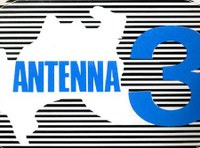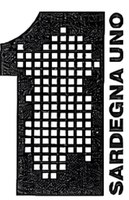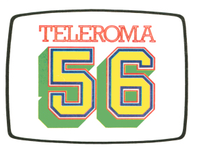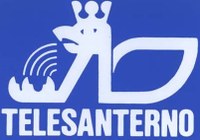Sampled Local Channels
ATLas focuses on five case studies that are highly significant in terms of production and programming strategies, links with their territories and audiences, as well as generated audiovisual imaginaries. These are five networks operating in different areas of Italy, whose multiple evolutions during the period under review will be reconstructed, highlighting their socio-cultural role in relation to other media cultures: meaningful experiences, therefore, to deepen the role of local TVs in Italy and to frame the functioning of private broadcasting and of the ideas underlying it. The reach of the channels, as well as their geographical locations and industrial set-ups are the key criteria adopted in defining the sample.

Antenna 3 (Lombardy)
Founded in 1977 by Renzo Villa, an entrepreneur and creative executive already involved in the TeleAltoMilanese experience (1975-1976), Antenna 3 was for a long time a major network with interregional ambitions, so that it could attract national stars for its entertainment programs such as Walter Chiari, Enzo Tortora, and the Quartetto Cetra. Equipped with five proprietary studios and particularly innovative technologies, the network was also involved in the production of original formats. After the development of the tv duopoly Antenna 3 had to reduce its ambitions, until its sale in 1987 and its incorporation into the Mediapason group, which can still rely on the precious original archive.

Sardegna 1 (Sardinia)
In 1982, Paolo Ragazzo, owner of private clinics in Cagliari and hotels in Villasimius and London, legally registered his new society as Sardegna 1. It was not before 1984 that the broadcasting activities started in Cagliari's area and in the southern part of the island. In 1986 Ragazzo joined forces with Sergio Zuncheddu's Tele Sardinia, reaching coverage of the entire region. In 1987 the first edition of Sardegna 1 Giornale - the station's in-house news program directed by Sandro Angioni with, among others, Maria Luisa Busi as one of the anchors, well before her arrival in Rai - is aired. In the first months of the newsroom's life, one of the most discussed cases regards Dino Marteddu, a worker of the Salini company, kidnapped in Ethiopia. Some months later Sardegna 1 is integrated into the Odeon TV syndication (until 1994). Today it is still operating and is part, together with Videolina, of the publishing group led by Sergio Zuncheddu.

TeleRoma56 (Lazio)
Founded in 1976 and still in operation, TeleRoma56 is notable for its programming devoted to entertainment and politics. Thanks also to the pioneering live commentary of AS Roma and SS Lazio football matches, TeleRoma56 soon became the most popular channel in Rome area, hosting the debut of many sports journalists who then gained national fame. Journalistic programmes were characterized by an interest in city news and a predilection for investigative reports. The network broadcast Italian Radical Party meetings live; in 1981, as a form of resistance to censorship, it aired an illegal copy of Bernardo Bertolucci's Last Tango in Paris (1972).

TeleSanterno (Emilia-Romagna)
In 1976 an entrepreneur in the ceramics industry, Domenico Berti, entered the television market by building the TeleSanterno studios and towers in Casalfiumanese (Imola). Thanks to original formats and some acquisitions (such as Superclassifica Show), TeleSanterno managed to gain a large following, with schedules that included news, sports, variety, religious and erotic programs, featuring well-known hosts such as Walter Chiari, Daniele Piombi, Serena Grandi and Ilona Staller. After some financial turmoils, there was a property turnaround in 1983, and TeleSanterno went on to consolidate itself as a reference for local audiences.

Videogruppo (Piedmont)
Founded in 1974 by Sergio Rogna Manassero under the name TelePino in the town of Pino Torinese, Videogruppo produced and broadcast a wide range of original titles, as well as of popular movies (the film critic Federico Peiretti held a regular weekly programme). The news report of this channel featured local issues in social, political and economic matters. In the 1980s, Videogruppo began to broadcast soap operas, sports and shopping programs (Portami tante rose, I sogni nel cassetto). Some of the network's most appreciated professionals turned into nationally known faces (Ramona Dell'Abate, Alba Parietti). The channel has been part of the Mediapason group since 2006.